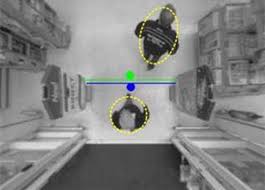Bluetooth Beacons: The ‘Next Big Thing’ In Retail Tech?
October 7, 2013
By Bruce Herrier, SVP of Product & Strategy at Veras Retail
If you work in technology, and retail technology in particular, you can get worn down by the excitement over the ‘next big thing’, usually with an acronym that loses meaning the more it is repeated. The Gartner hype cycle tracks this phenomenon. As technologies emerge, the possibilities of the new technology at first seem limitless, vendors jump on the bandwagon to exploit the technology and hype it to the max. It then enters the ‘trough of disappointment’ as implementation obstacles like cost, regulations and security, weigh down the rate of adoption.
However, I’m ready to drop my cynicism for the new ‘next big thing’ – Bluetooth beacons.
If you’re not already familiar with the technology, it involves using a low-energy variant of the Bluetooth technology, Bluetooth LE, introduced as part of the Bluetooth 4.0 spec, to send small packets of information to other Bluetooth devices in the immediate area. The beacon can be a fully-fledged smart device, Apple’s implementation of this concept is the iBeacon, added as part of iOS 7, so an iPad/iPhone can act as an iBeacon; or it can be a low-cost, embedded device mounted on a wall or fixture, such as the ones being marketed by Estimote.
Either way, the beacon’s ability to detect and quickly communicate (no pairing required) with nearby Bluetooth LE devices, which includes the bulk of the devices made in the past year by Apple, Samsung, HTC, and Nokia, opens up a huge variety of potential uses. Basically, any use case that involves an interaction with a smartphone in a large public area, which previously was hampered by infrastructure challenges (GPS inaccuracy, especially in large buildings, Wi-Fi security, and opt-in) is now in play.
It’s not so much that Bluetooth LE is a revolutionary technology that brings new and unheard-of capabilities to the market. The secret sauce of Bluetooth LE is that it holds the potential to make existing business concepts more feasible or more open.
A Few Examples From The World of Retail

Camera-Based Technology
A variety of people-counting technologies from Brickstream and others have used varying camera-based technologies for years to track customer activity. Bluetooth LE holds the potential to accomplish many (but not all) of the same capabilities of those technologies with lower cost and greater potential specificity.
Beyond GPS Triangulation
Shopkick built a business by creating a novel solution to address GPS inaccuracy by embedding an inaudible signal in the piped-in music in various stores. Bluetooth LE beacons could certainly fulfill the “welcome to our store, here’s a coupon” mobile offer use case with accuracy and without having to subscribe to Shopkick’s service and proprietary dog-whistle approach.
Predictably, much that has been written about Bluetooth LE has been focused on payments, whether or not BLE is a viable platform for payments, is it an NFC-killer. These miss the point that most have overlooked regarding mobile payments, technology has not been the obstacle that’s constrained adoption. The obstacle is that from the consumer’s perspective, taking five seconds to swipe a credit or debit card, accepted virtually everywhere, is not a problem that needs fixing.
Bluetooth LE’s potential lies in the fact that it combines a low infrastructure cost with a near-ubiquitous and non-proprietary technology platform. This opens up an array of capabilities that used to require massive investments in proprietary hardware and software. Consumer-facing use cases don’t have to be creepy or annoying. There’s a wide range of benefits to both customers and retailers by being able to be accurately located in the store. Additionally, given the wide adoption of mobile devices in the enterprise, there’s a wide variety of enterprise uses (warehouses come to mind) where privacy and annoyance concerns are secondary.
We’re anxiously awaiting the arrival of our developer kit and beacons from Estimote, because we think this ‘next big thing’ might actually be the exception to the rule and avoid the hype cycle.
